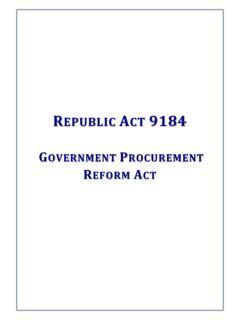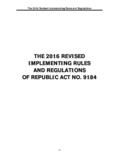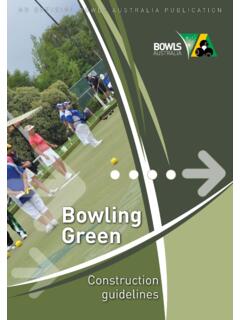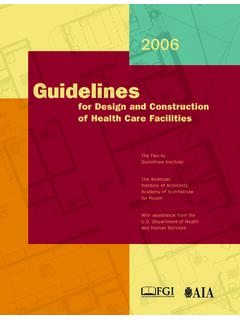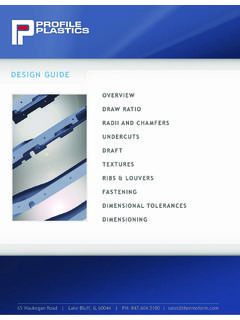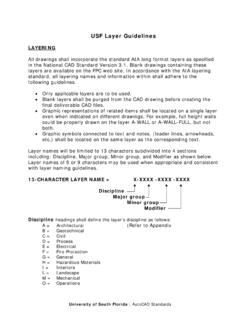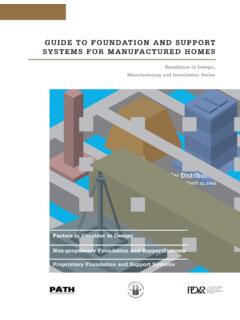Transcription of Construction Guidelines for Project Implementation during ...
1 5/F Executive Building Center 369 Sen. Gil J. Puyat Ave. cor. Makati Ave Makati, Philippines (+632) (+632) 0791 PHILIPPINE DOMESTIC Construction BOARD Construction INDUSTRY AUTHORITY OF THE PHILIPPINES An Attached Agency of the Department of Trade and Industry Construction Guidelines for Project Implementation during the period of Public Health Emergency Background The President declared a state of public health emergency through Presidential Proclamation No. 922 s. 2020 to address the Corona Virus Disease (COVID-19) threat, subsequently placing the whole of Luzon under Enhanced Community Quarantine (ECQ) on 16 March 2020.
2 The Inter-Agency Task Force for the Management of Emerging Infectious Diseases (IATF), based on its risk assessment recommended the extension of the ECQ in high risk geographic areas in Luzon and the imposition of the ECQ in some high risk areas in Visayas and Mindanao, while proposing a General Community Quarantine (GCQ) in all low risk and moderate risk areas in the country from 1 May 2020 to 15 May 2020. Different parts of the country are expected to progress through various levels of public health emergency and declared as high, medium, or low risk areas depending on the prevalence of COVID-19 cases and related statistics, thereby placing them under corresponding community quarantine status. The Construction industry which contributes about million workers to the country s labor force, in anticipation of the lifting of ECQ, is getting ready to return to work and would like to ensure the safety and welfare of people, most especially those of its employees/workers.
3 Construction industry players would like to focus on preventing the occurrence of and controlling the spread of the virus in the workplace, mindful that a single case of COVID-19 can lead to an interruption, if not total work stoppage. The global pandemic has affected livelihoods, lifestyles and industries including the Construction industry which relies heavily on human resources. Total work stoppage from the time ECQ was declared has had debilitating effects not just on workers who are mostly Project based and therefore paid on a daily basis but on contractors as well, majority of whom or 88% are small and medium enterprises (SMEs). The Philippine Domestic Construction Board (PDCB), an implementing board of the Construction Industry Authority of the Philippines (CIAP), mandated to formulate policies, plans, programs, and strategies for the development of the Philippine Construction industry organized a Technical Working Group (TWG) comprised of representatives from contractors of varying sizes and suppliers coming from Luzon, Visayas and Mindanao to draft the proposed protocols for the industry in preparation for resumption of Construction work in areas under quarantine.
4 The TWG drafted the Construction Guidelines for Project Implementation during the period of Public Health Emergency as a reference for contractors and implementing agencies, to ensure viability of projects and protection from and spread of the corona virus. The TWG considered four (4) major components of the Project cycle, namely; Materials, Manpower, Machinery and Money or the 4Ms of Construction in creating the Construction Guidelines for Project Implementation during the period of Public Health Emergency Page 2 of 12 Guidelines . These were developed considering SME contractors which employ the biggest chunk of the industry s labor workforce and large contractors involved in both public and private infrastructure projects as well as vertical Construction .
5 The Guidelines will give pointers in managing their human resources at this critical time but will likewise give important directions to contractors in managing their business not just for survival but to be able to contribute to the country s economic recovery program. The TWG is presenting options or courses of actions which contractors may consider depending on applicability to the Project s unique characteristics while maintaining minimum requirements based on Guidelines by government authorities such as the IATF Omnibus Guidelines for the Implementation of Community Quarantine in the Philippines, Department of Trade and Industry (DTI) and Department of Labor and Employment (DOLE) Interim Guidelines on Workplace Prevention and Control of COVID-19, and DOH Department Memorandum No.
6 2020-220, Interim Guidelines on the Return-to-Work. These Guidelines are subject to periodic review to better respond to developments and ensure workers health and protection as well as compliance with government regulations. Purpose The Guidelines will set key principles and minimum requirements that define responsible, healthy and safe operations for Construction related operations under COVID-19 and ensure the survival of business as well as the protection of workers. Scope / Coverage The Guidelines will include prevention, detection, and rapid response measures designed to achieve the principles above while maintaining business continuity across the Construction industry.
7 Policy Content / Guidelines Materials I. Deliveries 1. All equipment and material deliveries must be carefully planned and monitored. 2. Transition and delivery zones are identified and limited to select personnel, , receivers and deliverers. Transition personnel are regularly monitored, always provided required Personal Protective Equipment (PPEs) and may be included for optional testing. Social distancing and other protocols by the Department of Health (DOH) should be followed. 3. As much as possible, cargo is unloaded only by the receivers, while the deliverers do not leave their vehicles. If the receivers are not enough to unload the cargo, the deliverers must unload while the receiver has to wait at a secured distance until completed.
8 Construction Guidelines for Project Implementation during the period of Public Health Emergency Page 3 of 12 4. All cargo should undergo proper disinfection procedures before use. Likewise, involved staff should also be properly disinfected before entering the jobsite. Materials, which are exposed to the sun, such as concrete and gravel, need not be disinfected. Manpower I. Awareness and Communication 1. Active communication between the workers, safety officers (as specified under Section 14 of 11058 and its Implementing Rules and Regulations (IRR) as specified in DOLE 198 S. 2018), site supervisors, and management is advised in planning and implementing the protocols. All languages and dialects should be accounted for to ensure proper communication.
9 2. Infographics (may adopt DOH s), signages, and posters on health and safety measures (see Annex A) must be posted at entry points and strategic areas: Daily updates on the latest developments. Self-screening measures. COVID-19 Hotline. 3. As much as possible, all workers should exercise the practices for reducing the risk of transmission, and proper hygiene as identified by the DOH: Social distancing [at least one (1) meter distance from next person]. Proper handwashing using anti-bacterial soap (or use alcohol-based hand sanitizer when unavailable). Avoid contact with own eyes, nose, and mouth. Prohibit spitting. Covering of mouth with tissue or arm (if tissue is unavailable) when sneezing or coughing.
10 Use and remove PPE with care. Do not share personal belongings such as phones, pens, PPEs. Avoid physical greetings ( handshakes, hugs). 4. All workers status on-site and off-site, are properly noted at all times by the safety officers. Fit to work Sick High temperature Other conditions 5. An acceptable level of health evaluation is properly communicated between new hires and management. 6. All workers would need to provide their location or place of residence prior to working. This is to help create a proper algorithm for contact tracing. Additionally, workers coming from COVID-19 hotspots would need to be identified. 7. Quarantined workers should also be kept track of under strict confidentiality and privacy.

